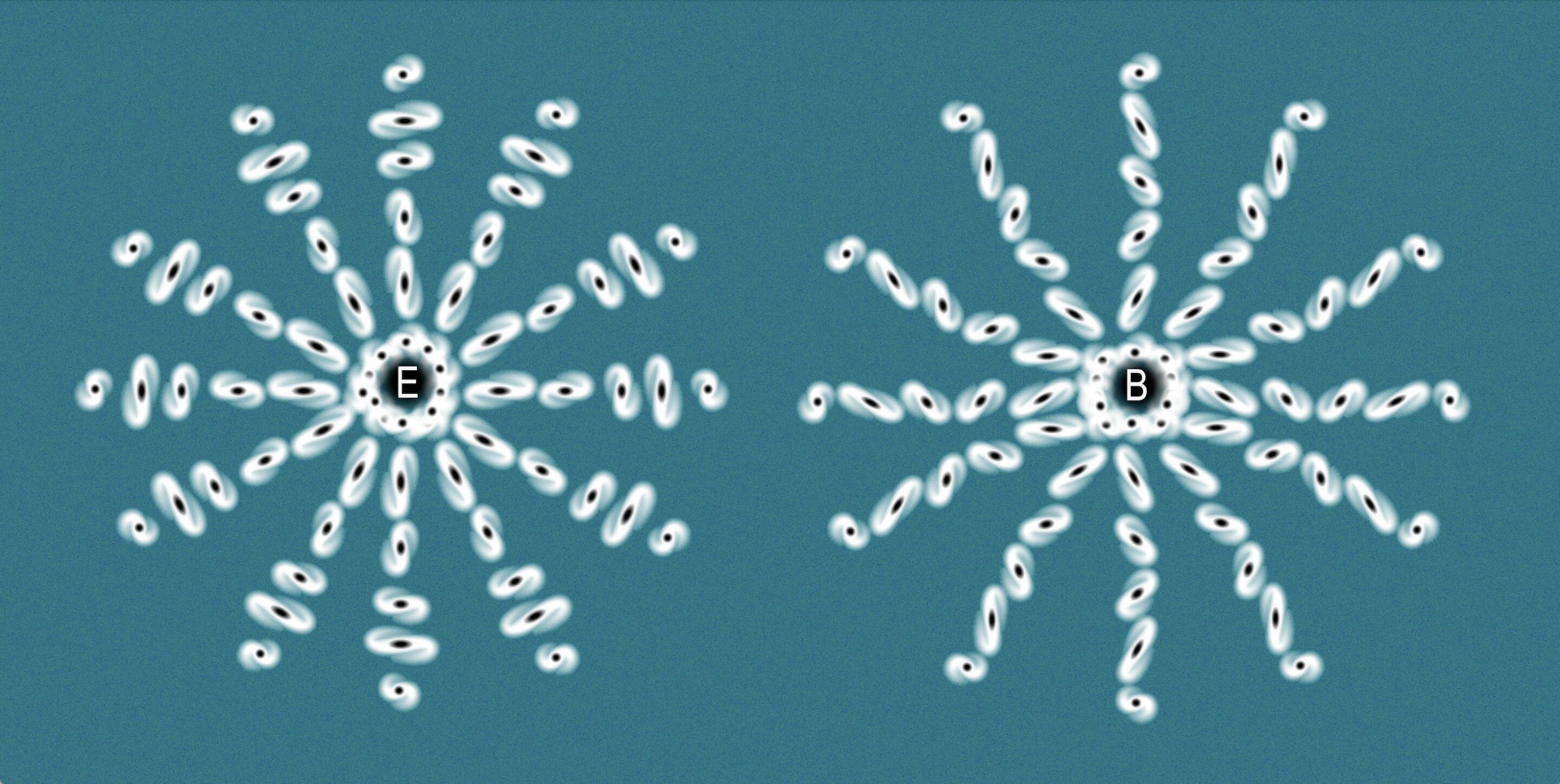Is the universe really uniform? This study challenges our certainties 🤔
Published by Adrien,
Source: Journal of Cosmology and Astroparticle Physics
Other Languages: FR, DE, ES, PT
Source: Journal of Cosmology and Astroparticle Physics
Other Languages: FR, DE, ES, PT
Follow us on Google News (click on ☆)

Examples of distortion of images of distant galaxies by E and B modes.
Credit: SISSA Medialab
The Cosmological Principle, which postulates that the universe is homogeneous and isotropic, is at the heart of our current understanding of the cosmos. However, some recent observations suggest anomalies on a very large scale, calling into question this supposed uniformity.
James Adam, an astrophysicist at the University of the Western Cape and lead author of the study, explains that these anomalies could indicate an anisotropy, that is, a preferred direction in the universe. This would contradict the idea that the universe is the same in all directions.
To test this hypothesis, the researchers developed a new method using the weak gravitational lensing effect. This effect, predicted by general relativity, allows the detection of distortions in the light from distant galaxies caused by intervening matter.
The study focuses on the analysis of E and B modes, two types of distortions generated by gravitational lensing. A significant correlation between these modes could indicate an anisotropy in the expansion of the universe.
The Euclid space telescope, launched in 2023 by the European Space Agency, plays a key role in this research. Its high-precision observations will allow testing this new methodology on real data.
If these anomalies are confirmed, they could require a major revision of the Standard Model of cosmology. However, James Adam emphasizes that the exact nature of this revision remains uncertain, ranging from a minor adjustment to a paradigm shift.
This research opens new perspectives for understanding the structure and evolution of the universe. Future observations from Euclid and other observatories will be crucial to validate or refute these potentially revolutionary results.
What is the Cosmological Principle?
The Cosmological Principle is a fundamental hypothesis in cosmology. It postulates that the universe is homogeneous and isotropic on a large scale, meaning it looks the same in all directions and at all points.
This hypothesis greatly simplifies cosmological models. It allows describing the universe as a coherent whole, rather than as a collection of distinct regions with different properties.
The Cosmological Principle is the basis of the Standard Model of cosmology. This model, although very effective in explaining many observations, might require adjustments if large-scale anomalies were confirmed.
The verification of this principle is therefore crucial for our understanding of the universe. New techniques, like the one developed in this study, could help us test its limits.
How does weak gravitational lensing work?
Weak gravitational lensing is a subtle effect of general relativity. It occurs when the light from a distant galaxy is slightly distorted as it passes near a concentration of matter.
This effect allows astronomers to study the distribution of matter in the universe, including invisible dark matter. It acts as a cosmic magnifying glass, revealing details otherwise inaccessible.
The analysis of distortions allows separating the signal into two components: E and B modes. E modes are related to the distribution of matter in an isotropic universe, while B modes could indicate anisotropies.
This technique is particularly powerful because it allows probing the universe on a very large scale. New observations, like those from the Euclid telescope, should provide precise data for this analysis.